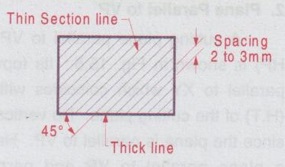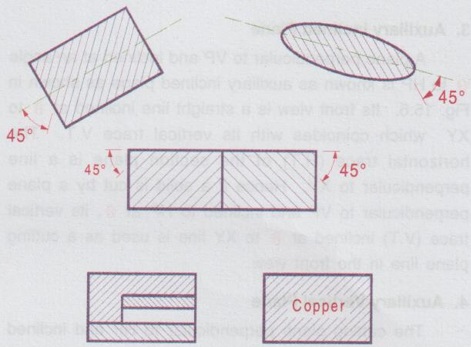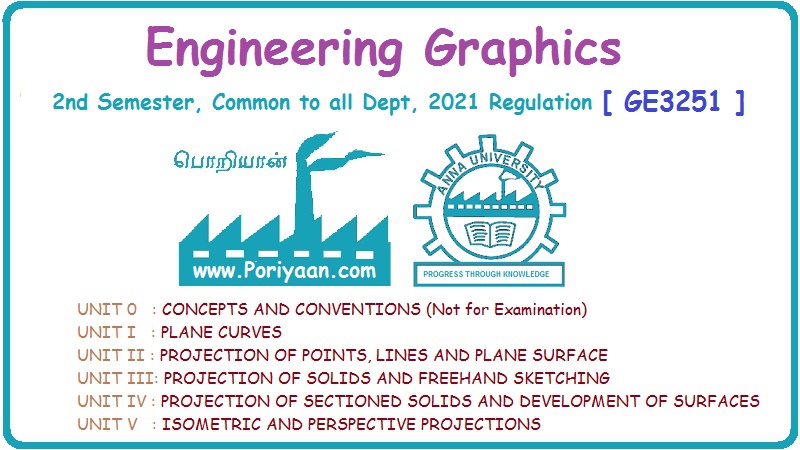Engineering Graphics: Unit IV (a): Sections of Solids
Representation of the Section
Engineering Graphics (EG)
The section is indicated by a closed boundary using thickline and is filled with section lines.
REPRESENTATION OF THE SECTION The section is indicated by a closed boundary using thickline and is filled with section lines. The section lines are drawn using thin lines of equal spacing from boundary to boundary. The spacing of section lines can be 2 to 3mm depending on the size of drawing. The section lines are drawn at an angle of 45° (towards left or right) to the boundary line. The process of drawing section lines is called "hatching". The following points should be observed while hatching. i) The section lines are normally drawn at 45° to the boundary line (towards left or right) at uniform spacing (2 to 3 mm) using thin lines. ii) If the boundaries of the object itself is inclined at 45° to the reference planes, hatching lines are drawn at 45° to the longitudinal axis of the sectioned surface. iii) The adjacent components in a sectional view shall be hatched in the opposite directions. iv) If more number of components exists with different properties exists at a section, these components are differentiated by hatching in opposite directions and / or spacing the hatching lines at closer intervals. v) As far as possible the text inside a sectioned surface should be avoided. In unavoidable situations, the hatching lines are to be drawn without crossing the text. vi) Draw the hatching lines at the end of a drawing. ie., only after finishing the drawing (ie. all the projections / views) and printing the text.

Engineering Graphics: Unit IV (a): Sections of Solids : Tag: : Engineering Graphics (EG) - Representation of the Section
Related Topics
Related Subjects
Engineering Graphics
GE3251 eg 2nd semester | 2021 Regulation | 2nd Semester Common to all Dept 2021 Regulation
